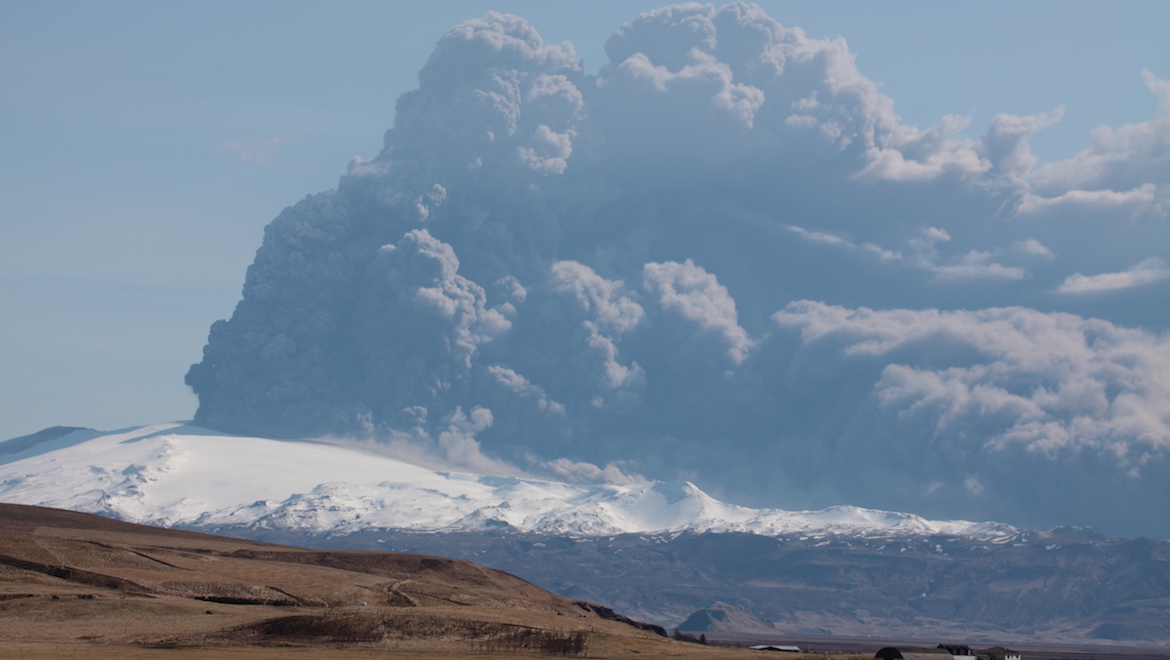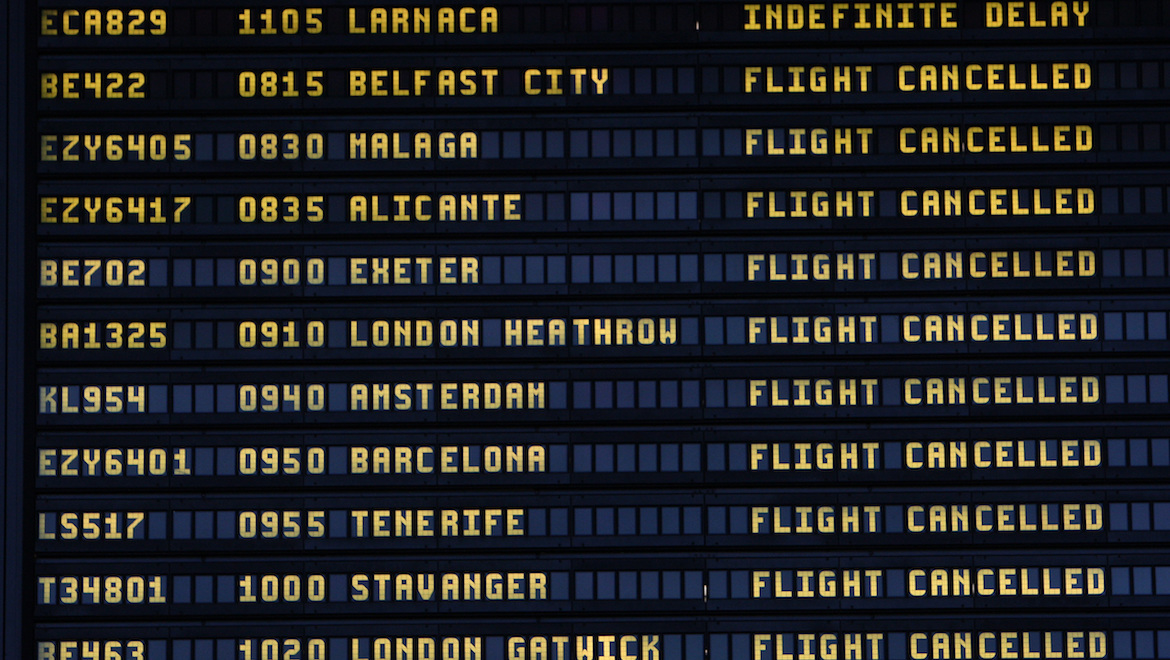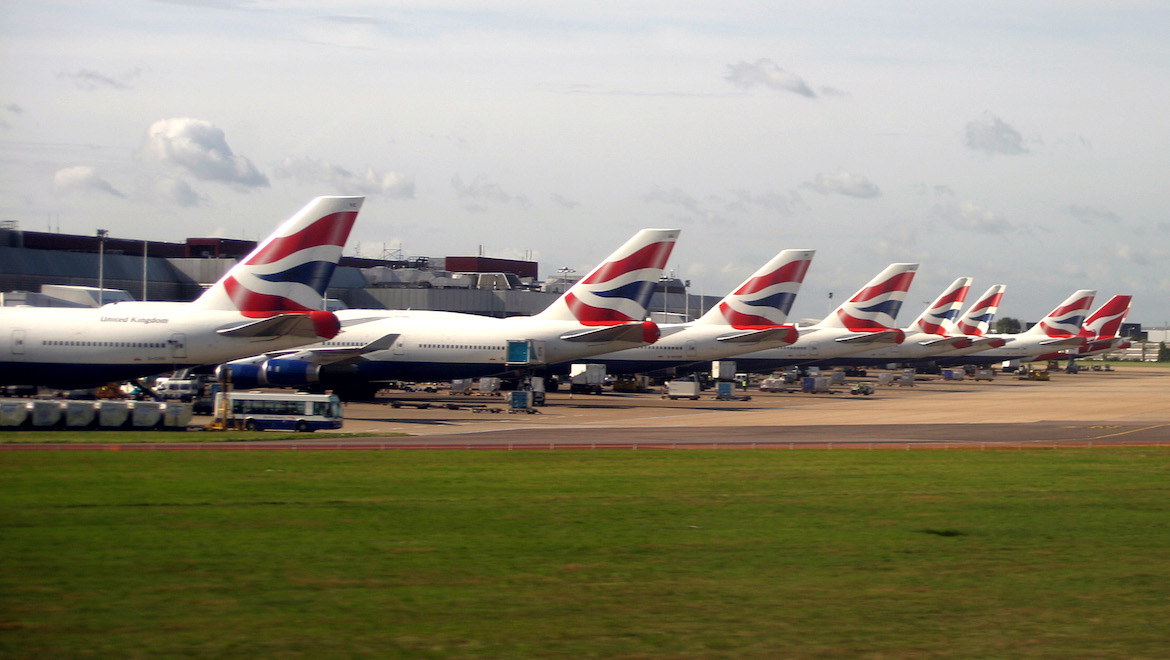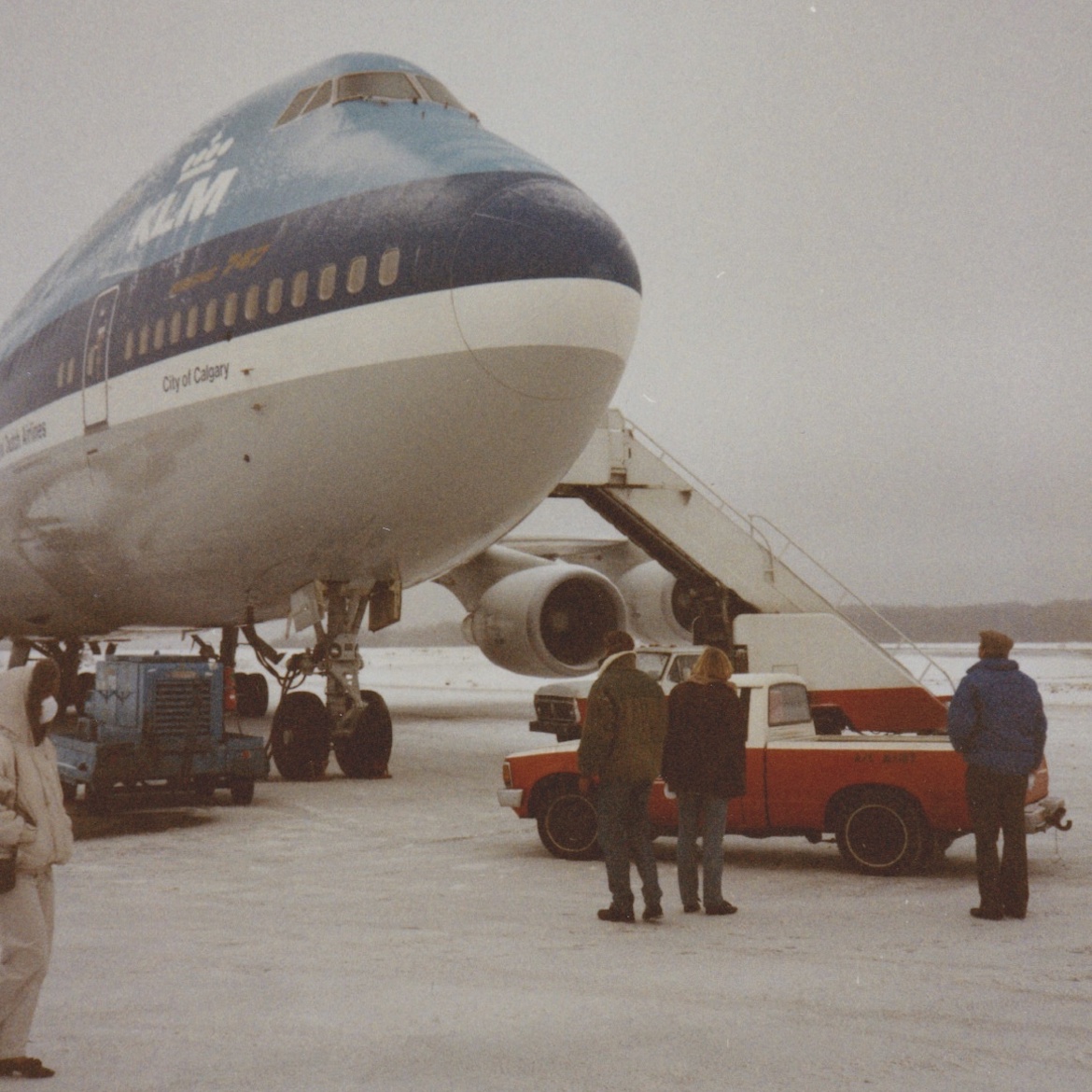This story from the Australian Aviation archives is from June 2010, when Geoffrey Thomas wrote about the fallout from the disruption caused by the ash cloud from Iceland’s Eyjafjallajökull volcano.

The travel chaos and dislocation for millions of passengers caused by the ash cloud from the eruption of Iceland’s Eyjafjallajökull volcano in April 2010 sent shockwaves around the world and shudders through airline boardrooms and no doubt in the corridors of political power.
Just one small eruption closed down Europe’s airspace for four days as scientists and meteorologists grappled with the danger of the cloud to aircraft against a background of limited industry consensus on the issue.
Ramifications, repercussions and finger pointing will go on for months and possibly years over governments’ glacial reactions to the problem and the liability for the closure.
According to the International Air Transport Association (IATA), its member airlines lost over US$1.7bn (A$1.8bn), with 70,000 flights cancelled and 313 airports closed.
The financial cost is expected to top US$3bn (A$3.3bn) when cargo, low cost airlines and travel industry costs are factored in, assuming there aren’t further disruptions.
However, before the airline industry gets too heated in its attacks on governments it may well find that it was its own inability to reach consensus on engine tolerance to volcanic ash that may be to blame.
According to Britain’s The Guardian newspaper, the International Civil Aviation Organisation (ICAO) has been trying for years to set safe levels for ash, and it cited ICAO minutes of a 2008 Paris meeting that show the industry at odds with regulators.
The minutes stated that the ICAO meeting concluded that improved measurement techniques should allow progress “with regard to the definition of the lower limit on safe ash concentrations”. According to The Guardian, ICAO complained it had “proven difficult to get formal aviation representation” at workshops on the issue organised by the United Nations’s World Meteorological Organisation.
ICAO suggested “input of the aviation industry to this problem may have to be sought” through its sub-group on volcanoes, which has industry representatives. ICAO asked several groups, including IATA, to prepare reports for the volcano group’s next meeting at Lima in Peru in March this year.
Minutes for that meeting show the industry did not deliver. “IATA informed the group about the strong efforts made in order to get representation from the industry … but unfortunately these efforts had not been successful, to the disappointment of the group,” the minutes noted.
However, Herbert Puempel, chief of the WMO aeronautical meteorology division, who sits on the ICAO group, told The Guardian that the industry’s reluctance was “fully understandable.”
“They have found it very difficult to come back with a single answer. If they have one number then it would be very low,” he said. “The moment you set a limit then the lawyers will have a field day.”
IATA added that “at the end of the day we are dependent on the airframe and engine manufacturers and their experts. We have encouraged them to participate.” However, an aerospace industry source told The Guardian that any attempt to blame aircraft and engine makers was “passing the buck”.
IATA’s director general Giovanni Bisignani sharply criticised European governments for their lack of leadership in handling the airspace restrictions and urged a rethink of the decision making process.
During the crisis he said: “We are far enough into this crisis to express our dissatisfaction on how governments have managed it – with no risk assessment, no consultation, no coordination and no leadership.”
“In the face of such dire economic consequences, it is incredible that Europe’s transport ministers have taken five days to organise a teleconference. Governments must place greater urgency and focus on how and when we can safely reopen Europe’s skies. This means decisions based on risk management, facts and procedures that maintain safety.”

During the crisis, airlines were proposing daylight flights, restrictions to specific flight corridors, special climb and descent procedures and more frequent detailed boroscopic engine inspections to detect damage, but to no avail.
At the same time, doubts were fuelled by volcanic ash encounters for a Finnish Air Force F/A-18 and NATO F-16s.
There was also suspected volcanic ash damage to a World Airways MD-11 flying from Maastricht to Ostend-Bruges, and a Thomas Cook 757 was forced to return to Manchester due to the loss of compressor bleed air from one engine after crew sensed a smell of volcanic ash during the climb.
Australian Aviation has listened to ATC tapes of the Thomas Cook 757, G-JMCF, on a positioning flight as TCX952P, with pilots describing the intense smell of volcanic ash.
“We got the smell in the climb at FL160 and it stayed with us through FL200. It was quite intense in the climb,” the pilot says.
“We still have the smell in the cabin. There are still traces.”
“Thank you for that we will pass it on,” responds ATC.
The 757 crew reports on finals that all is OK and they have lost one of their “engine bleeds possibly through a contaminated valve”.
At the same time, a leading vulcanologist advising the UN said that European authorities had no choice but to close much of their airspace because of the volcanic ash cloud.
Henry Gaudru, president of the European Vulcanological Society, said that scientists were unable to reliably measure density of ash in the atmosphere except in the more immediate vicinity of an eruption.
“Closure to air traffic was the only measure that could be taken” because there was only limited knowledge of the exact degree of concentration of ash in the cloud dispersed by winds over Europe and its impact on engines.
“There is at the moment no reliable data on the exact concentration of ash in the atmosphere and when an aircraft can fly, or not, through such plumes,” Gaudru told media.
Gaudru, who is a respected expert on volcano monitoring and scientific adviser to the UN International Strategy on Disaster Reduction, said that “there have been no studies by aeronautical engineers or meteorologists that could have given indications to civil aviation authorities to assure them that an aircraft would not fall if it flew into the plume.”

Volcanic ash, which is invisible to aircraft weather radar and undetectable at night, has proved deadly to aircraft. Over the past 30 years, there have been 90 encounters, some very serious.
Made up of pulverised rock and glass, the ash gets into virtually every aircraft system and can paralyse the engines in minutes as the glass melts in the jet’s combustion chamber and melds with moving parts. An aircraft’s jet engines are like giant vacuum cleaners and suck in the ash at near-supersonic speeds, magnifying the damage.
In past encounters the ash has also blasted the cockpit windows in seconds, making visibility zero, and clogged vital speed sensors, rendering flight computers useless.
The deposits coat the fuel system’s temperature sensors, creating a false and lower temperature reading. The automatic monitoring system pours in more fuel, raising the heat and damaging the turbine, which can also make the engine shut down.
The two most famous encounters with volcanic ash involved 747s, one a British Airways flight over Indonesia in 1982 en route to Perth from Kuala Lumpur, and another involving a 1989 KLM flight en route from Amsterdam to Anchorage.
In both cases, all of the engines failed and eventually were restarted at much lower altitudes, but later were scrapped because of the damage. The KLM 747’s environmental control system was replaced, its fuel tanks were cleaned and the hydraulic systems needed repair.

When Mt St Helens erupted in 1980, a 727 and a DC-8 encountered separate ash clouds. Both experienced damage to their windshields and several systems, but both landed safely.
The increased availability of satellites and the technology to transform satellite data into useful information have reduced the number of volcanic ash encounters. But extensive ash clouds, such as the one in April over Europe, still present an enormous challenge.
In 1991, Mount Pinatubo on the island of Luzon in the Philippines erupted just 90km northwest of Manila. Over the course of several eruptions the volcano ejected 10km3 of material, making it the second biggest eruption of the 20th century. There were 20 volcanic ash encounters with aircraft. Despite the more advanced ability to predict where ash could be found, the wide extent of the ash cloud made it difficult to avoid.
The eruption of Mt Popocatepetl in Mexico in 1997 and subsequent intermittent eruptions forced the Mexico City airport to close multiple times for up to 24 hours.
During the recent European closure, governments came under intense pressure to lift the ban from British Airways, KLM and Lufthansa, which all conducted “test flights” with no damage.
British Airways even dispatched flights from the US and Canada in anticipation of UK airspace being reopened, with one flight having to divert to Europe before the balance of flights in the air were cleared to land.
After European governments met on April 19 they agreed to a gradual opening of airspace after the four-day shutdown with airspace divided into three zones.
The first zone comprised areas where volcanic ash emissions were heaviest and in which full restrictions on operations will be maintained.
The second zone included areas where some ash may be present but generally not enough to affect aircraft systems, or around which aircraft can fly and where partial flight restrictions were allowed.
The third zone consisted of areas not affected with flights allowed to operate without restriction.
The eruption of Iceland’s Eyjafallajökull volcano brought into sharp focus how much we depend on aircraft and how important a benign natural environment is to the industry.
Taken for granted by too many in government are airline schedules, along with fresh food from around the globe and express cargo that somehow magically appears in supermarkets and on doorsteps, on cue and without fuss.
Every day nearly eight million people take to the air on 84,000 flights, and Europe accounts for about 30 per cent of those numbers.
And while those passengers are enjoying their flight, under the floor of their aircraft in the cargo hold 30 per cent of the world’s trade is hitching a ride. Shutting down Europe’s airspace effectively stopped one-third of the world moving.
Aviation has long battled to get governments to comprehend its value, with various surveys rating tourism and travel well down in importance. When combined, it is the world’s biggest and fastest growing industry.
According to the World Travel and Tourism Council in London, the industry directly employs 235 million and accounts for 9.2 per cent of global GDP.
Those numbers do not include air cargo, the extent of which is impressive. Airlines move over four million tonnes of cargo worth US$60bn (A$66bn) a week between 3400 airports in 220 countries.
According to Peter Harbison, chairman of the Centre for Asia Pacific Aviation (CAPA), “aviation’s value in world commerce and communications is generally taken for granted – until it stops.”
“Ask any travel agent or airline today what the social wear-and-tear has been as a result of the ash cloud over Europe and it ranges from deep inconvenience to family tragedies. Surface transport options have proven woefully inadequate to fill the gap, even those within Europe … let alone the hundreds of thousands of travellers stranded around the world,” said Harbison.
The CAPA boss said that aside from the profound disruption, our whole global economy is built around fast movement of high value products, from fresh produce, through computer products, car parts and urgent medical supplies.
“More economically importantly even than that, entire supply chains rely on immediate delivery of ingredient products for manufacturing and retailing. Thus there is a near-endless variety of affected companies and consumers as the blockage moves downstream,” said Harbison.
“The ash cloud has provided an unplanned social and economic experiment, with airlines again at the epicentre,” says Harbison.
“All those who believe that aircraft are toxic to the environment have had a sneak preview of what the world would be like if, indeed, people and goods did not fly.”

For now the worst may be over, but there are dire warnings that larger eruptions are to come, as the eruption of Eyjafjallajökull is barely a pale shadow of some of the bigger examples from Iceland.
Over the past 1,000 years all three known eruptions of Eyjafjallajökull have triggered eruptions at the far more dangerous Katla which has a crater diameter of 10km, with eruptions of Eyjafjallajökull in 1612 and 1823 quickly followed by much larger eruptions of its neighbour.
But even worse and on Australia’s doorstep would be an eruption of the size of the 1815 eruption of Tambora in Indonesia, called the biggest eruption in recorded history with the following year described the year without summer.
A year without summer means a year without jet aircraft, with the economic consequences to our just-in-time society incalculable.
In Iceland the eruption in 1783-1784 of the Laki and Grímsvötn volcano systems, located very close to Eyjafjallajökull, spewed an estimated 14km3 into the air, reducing global temperatures by three degrees and leading to the deaths of thousands in the UK from the cold and poisoning from an estimated 120 million tonnes of sulphur dioxide.
Scientists working with the University of Iceland suggest that it is a distinct possibility that the volcano will continue to erupt on and off for months to come, as occurred during the eruptive period in 1821-1823.
The scientists are also predicting that a reduction in the ice caps and glaciers in Iceland will lead to additional magma generation, resulting in more frequent and more voluminous eruptions in the future.
Eyjafjallajökull is now just another addition to the long list of challenges the industry has faced in the past 10 years and is a sobering reminder of nature’s might and our inability to harness it.
VIDEO: A news report from April 2010 on the impact of the Iceland’s Eyjafjallajökull volcano ash cloud from the Associated Press YouTube channel.
This story first appeared in the June 2010 edition of Australian Aviation. To read more stories like this, become a member here.










